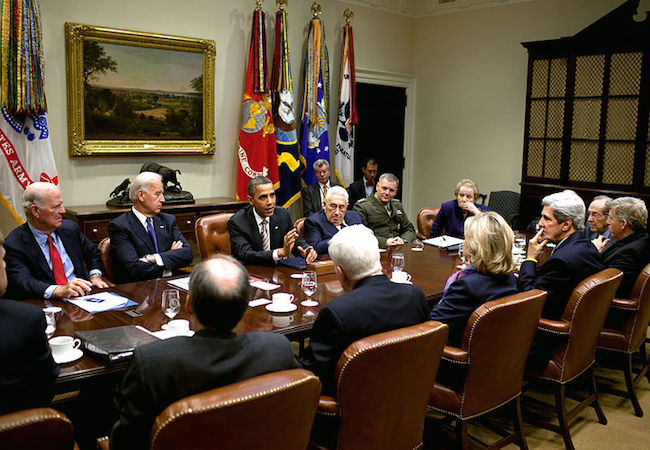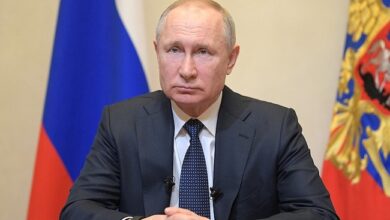
By Maimuna Ashraf
Almost fifty years after the nuclear weapons states pledged under Non-Proliferation Treaty (NPT) to pursue goals for ceasing nuclear proliferation and its arm race, the fiscal years continues to validate a steady hike in their nuclear budgets. Lately, the states possessing nuclear weapons are announcing their defense budgets; yet again the pronounced statistics reaffirms their rising nuclear spending. It is estimated that the collective annual spending of nine states on their nuclear programs surpasses one hundred billion dollars. This hike reflects two dominant verities, first, advancement in the nuclear capabilities is rapidly growing and second, the development, deployment, maintenance and modernization of nuclear weapons cost an enormous price tag. Consequently, the states possessing nuclear weapons spend a major chunk of their defense budget on strategic nuclear arsenals. The defense budget and strategic culture is interconnected thus the military expenditures and nuclear spending are discussed simultaneously. The geo-strategic realities, threat-perception and geo-political directions derive the decisions on defense/nuclear policies and expenditures.
The rising defense expenditures of states are resulting in security dilemma. This is why despite ongoing global efforts for nuclear non-proliferation, the nuclear costs of two major powers, U.S. and Russia, will continue to rise even after the ratification of the New Strategic Arms Reduction Treaty (New START) agreement, under which both states will overall reduce the size of their strategic nuclear weapons and the number of their deployed warheads. This rise will be reasoned due to the plans of both states to upgrade and modernize their aging nuclear arsenals, missiles and submarines. Lately Obama’s proposed budget for fiscal 2016 amounts to $585.3 billion while nuclear budget seeks 8% more than the last financial year. The United States (US) estimated cost on nuclear weapons and related expenditures is $56 billion annually. According to a recent report of the National Defense Panel Review of the 2014 Quadrennial Defense Review, US will be spending $872 billion to $1 trillion on its nuclear program in next 3 decades. The US developments have reportedly coerced Russia to historical rise of 33% (more than $50 billion) in defense budget this year. Russia is also planning to grind out a new generation of submarines and rockets to uphold an uneven parity with US. China too also announced a hike of 10% in its defense budget for FY 2015-16 that roughly sums up to $145 billion, the second highest in the world after US.
Other than this triangle of three major international players, the South Asian region holds significance for unprecedented nuclear build-up between two nuclear rivalries. The South Asian regional nuclear politics and policies are defined by the behaviors among three states; China, India and Pakistan. Pakistan’s nuclear posture is India centric and Indian nuclear posture is believed to be mainly directed against China and nominally against Pakistan. Conversely, the recent trends of Indian defense expenditures exhibits Indian nuclear program largely focused to Pakistan and nominally towards China.
India has recently announced the defense allocation of $40 billion for financial year 2015-2016. The budget demonstrates a raise of 7.9% over the last fiscal year. However, it is a low raise of 5% as compared to 17% of last fiscal year. The insignificant hike in Indian budget must be significant to Pakistan for several realities. First, this rise will not be enough to thin the military gap with China especially with declared forays into the Indian Ocean but enough to uphold asymmetry with Pakistan. This limited hike validates Indian nuclear developments primarily focused to Pakistan and not China because the maintenance of nuclear weapons plus the acquisition of warships, fighter planes and submarines is not possible at once with this defense allocation. Second, the border skirmishes and aggressive political postures of Indian government continue to deteriorate relations between Pakistan and India; contrarily, India and China are seeking to reduce border tensions through high-level diplomacy. Thus the existing trends of Indian elected regime appear to focus on Indian rigidity and readiness towards Pakistan. Third, evidently, the budgetary limitation means that despite the maritime growing challenges in Indian Ocean, the immediate focus of India will remain on the internal security and land-based threats. The existing strike corps- two-third of the military strength of India- is keyed towards Pakistan. Fourth, Indian future missile development is geared towards developing long-range missiles to contain China, therefore there is an internal debate on the need to deploy canistered launchers and equip ballistic missiles with the capability to carry multiple warheads, which the Indian government has yet to be approved. Thus majority of the current military modernization is still aspired towards Pakistan.
Consequently, the existing defense-spending trends confirm that India has not yet shifted its strategic alignment and nuclear postures towards China and both are tied towards Pakistan. The verity that India’s prime threat is focused on Pakistan will compel Pakistan to increase its defense spending and nuclear dependency regardless of monetary constraints. The nuclear budget of any nuclear state is no longer affixed with economic position of states but tied to political decisions. The antagonism of states is determining their nuclear developments. The nuclear weapons have been established and accepted incumbent for maintaining strategic stability and credible deterrence; thus making the nuclear budget untouchable regardless of resource constraints. The recently revived Indo-US nuclear deal has already been viewed as factor of instability in the regional nuclear equation and would force Pakistan to revise its nuclear calculus in order to ensure the full spectrum credible minimum deterrence to contain all form of conventional and nuclear asymmetry. It is naïve to question Pakistan’s growing nuclear-weapon size in presence of growing neighboring threats. Pakistan’s growing nuclear build-up is by compulsion and not by choice. Thus, the defense-spending trends are starting a nuclear arm race in South Asia which is of grave concern.




